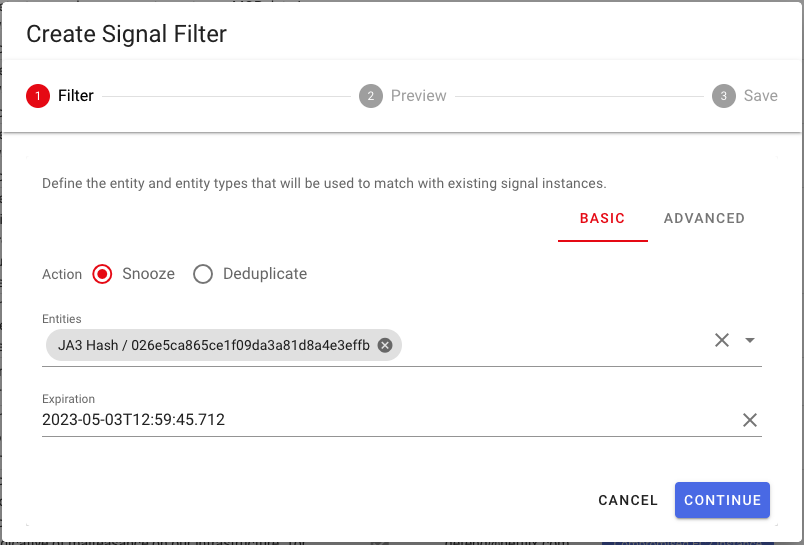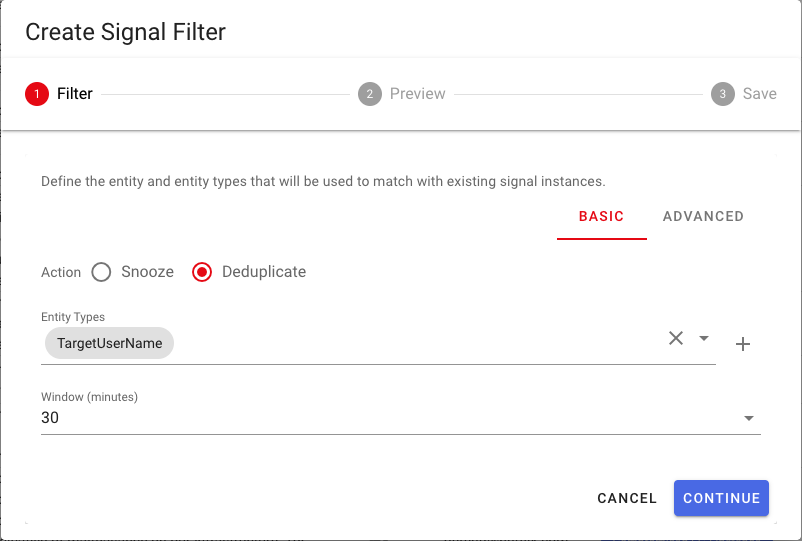Filter
Signal Filters are used to define how Signals should be grouped together or when they should be snoozed.
To create a Signal Filter, you must first define the Entity Types that will be used to deduplicate or snooze Signals.
Snooze Filter
Snooze filters make use of entities extracted from signals to define when a signal should be snoozed. This feature is useful when an influx of signals is expected for a given period of time (e.g. some known administration activities) and you want to temporarily stop cases from being created. Even when a signal is snoozed it will still be processed and associated entities will be created.
For example, you can create a Snooze Filter that will snooze all incoming signals that contain a specific JA3 hash.
You also have the option to create a Snooze Filter without specifying any entities, which will snooze all incoming signals matching that filter.
Creating a Snooze Filter
To create an Snooze Filter, follow these steps:
- Navigate to a Signal Definition edit page.
- Click on the '+' icon adjacent to the 'Signal Filter(s)' dropdown menu.
- Select the
Snoozeradio button under theBASICtab.

Deduplication Filter
In order to perform signal duplication, a duplication filter must be created. Deduplication filters leverage extracted signal entity types and a sliding time window in order to determine if a signal should be marked as a duplicate. If a match is found, the current signal is marked as duplicate and it is associated with the existing case.
By default, all Signals are deduplicated over a one hour window unless a custom Deduplication Filter is defined.
Creating a Deduplication Filter
To create an Deduplication Filter, follow these steps:
- Navigate to a Signal Definition edit page.
- Click on the '+' icon adjacent to the 'Signal Filter(s)' dropdown menu.
- Select the
Deduplicationradio button under theBASICtab.
